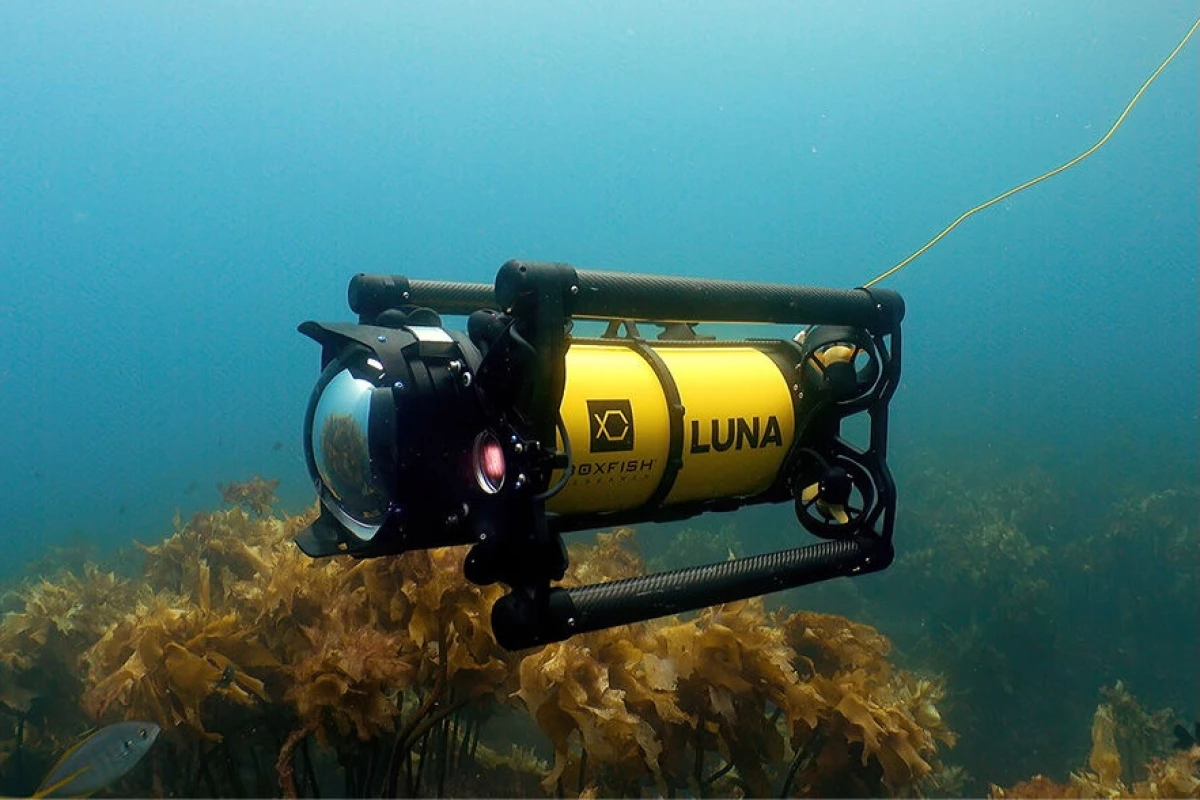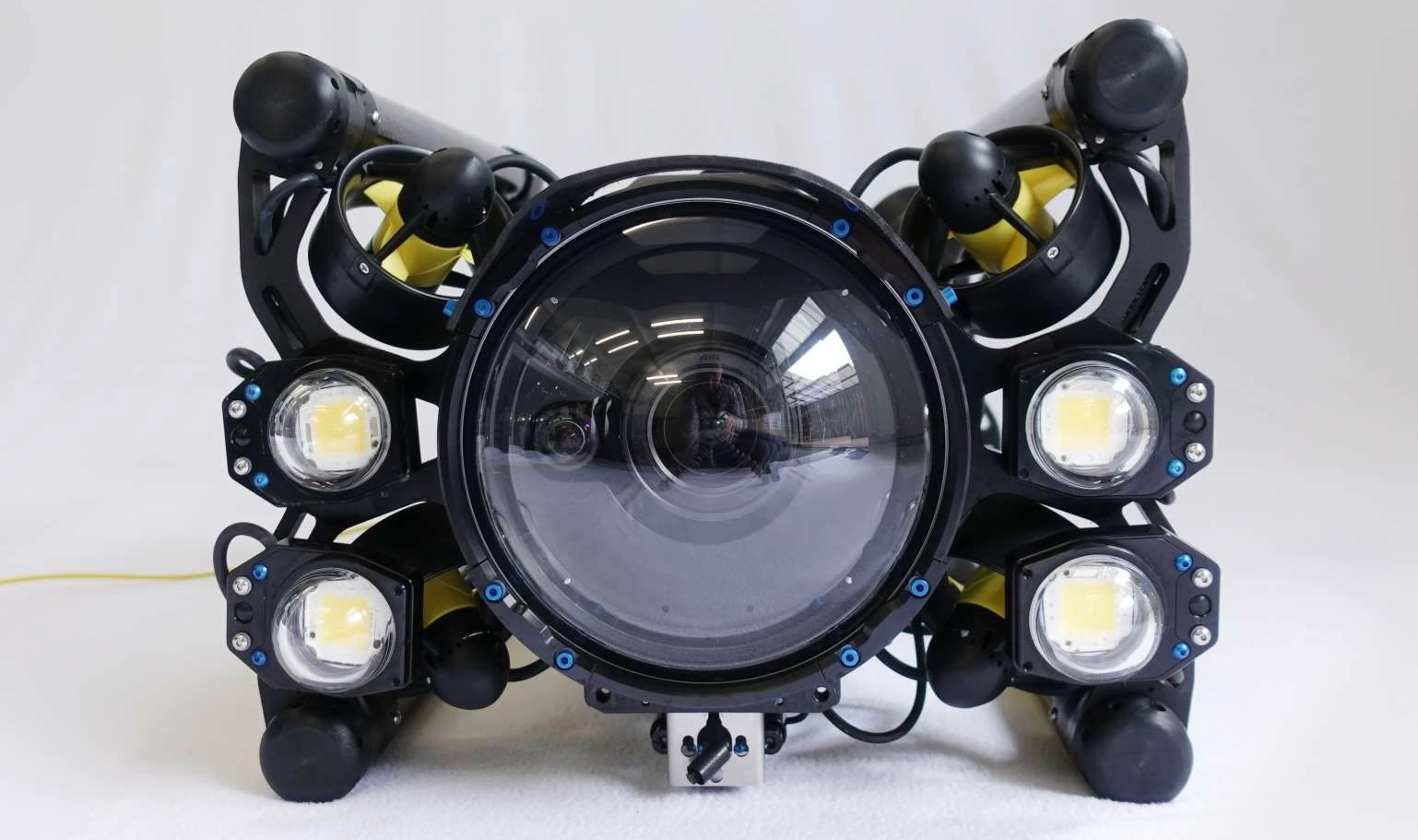Unlike most other ROVs, the Luna is designed specifically for underwater filmmaking. It records video at a maximum resolution of 8K/30fps and can descend as deep as 1,000 m (3,281 ft) – so all you giant squids out there, get ready for your close-up.
First of all, it should be noted that all underwater ROVs (remotely operated vehicles) do have cameras, typically up to 4K/30fps in resolution.
And while these cameras certainly can be used for cinematography, their primary purpose is simply to provide the surface-located operator with a view of what's under the surface. That view definitely comes in handy as the ROV is utilized to perform tasks such as searching for sunken objects or inspecting underwater structures.
Boxfish Robotics' Luna goes much further in the camera department, as it comes with the buyer's choice of a Sony ⍺1 or A7SIII camera. The ⍺1 shoots full-frame 10-bit 4:2:2 video at resolutions of 8K/30fps or 4K/120fps (along with 50-megapixel stills) while the A7SIII tops out at 4K/120fps and 12 megapixels.
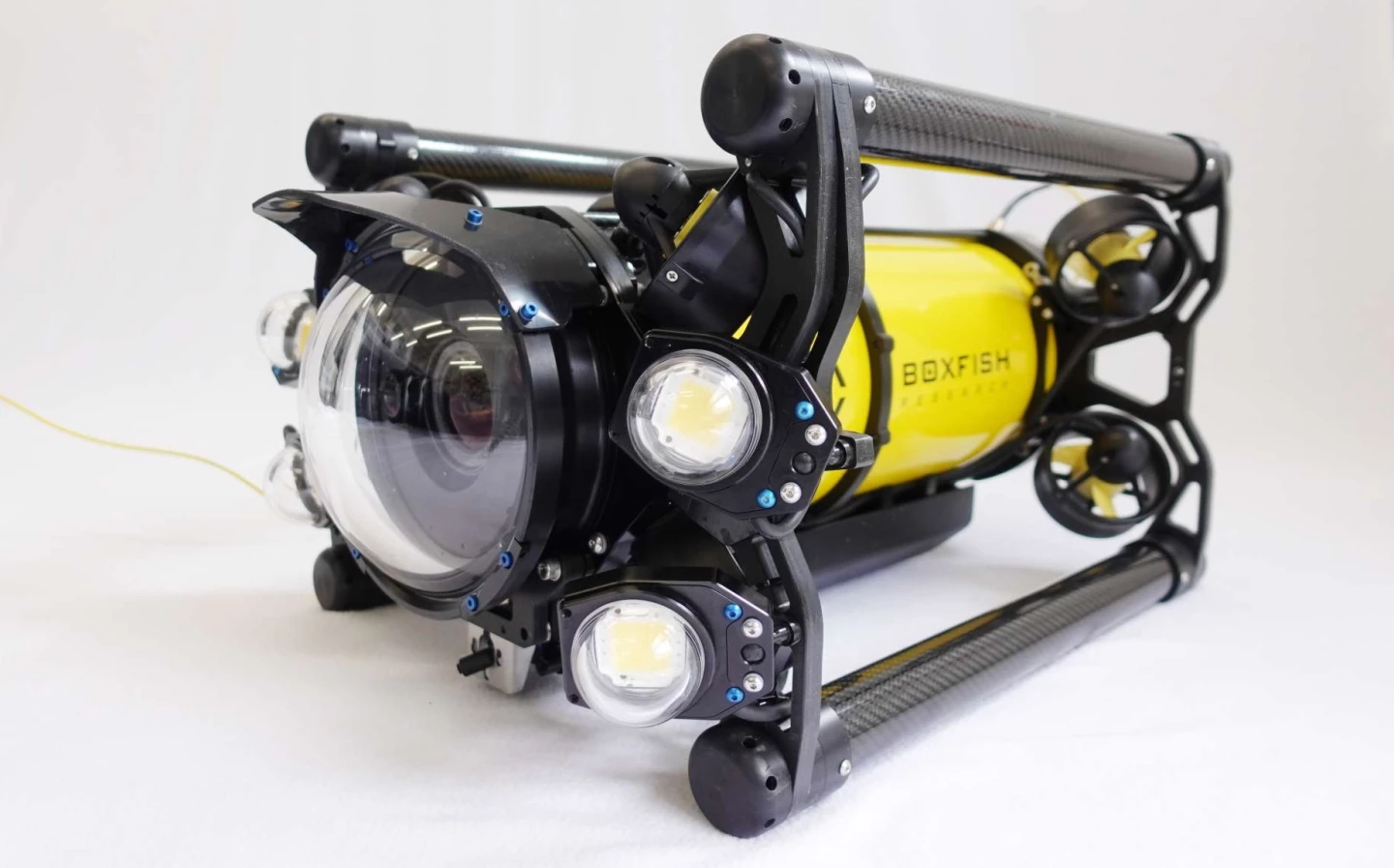
Both cameras feature a Sony FE 16-35mm f/4 Zeiss Lens and 5-axis optical image stabilization, plus they can also shoot 4K/30fps ProRes RAW video at the surface. Whichever camera is chosen, it shoots through either a 10-inch glass dome which is good to a depth of 80 m (262 ft) or an 8-inch acrylic dome that's good to 500 m (1,640 ft) … or 1,000 m (3,281 ft) with an upgrade.
And importantly, two dimmable 8,500-lumen spotlights provide illumination in dim conditions.
As is the case with other ROVs, an umbilical communications cable connects the Luna to its operator's control console. Along with the controls for steering the ROV, that console features a 17-inch 4K screen, plus it lets the operator manually adjust the camera's iris, white balance, ISO, zoom, focus and other parameters.
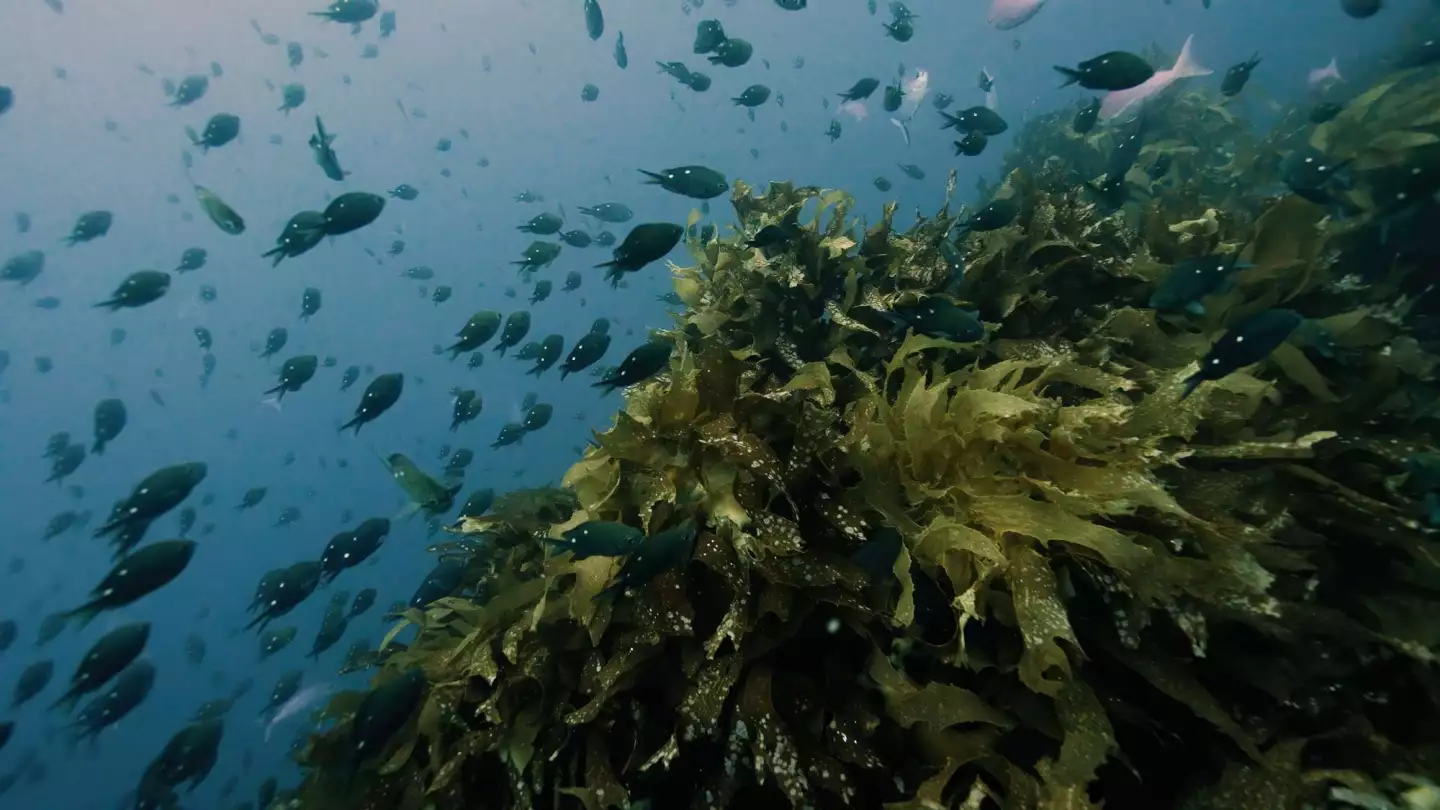
The Luna's video output is recorded on a removable SSD (solid-state drive) in the console, allowing users to swap drives without having to surface the ROV every time they do so.
The vessel itself boasts a hard-anodized aluminum body, an auto-stabilization system, and eight vectored thrusters which let it move in any direction. It can additionally be set to hold its depth and/or pitch, to keep following its current course, and to perform its versions of dolly and crane shots.
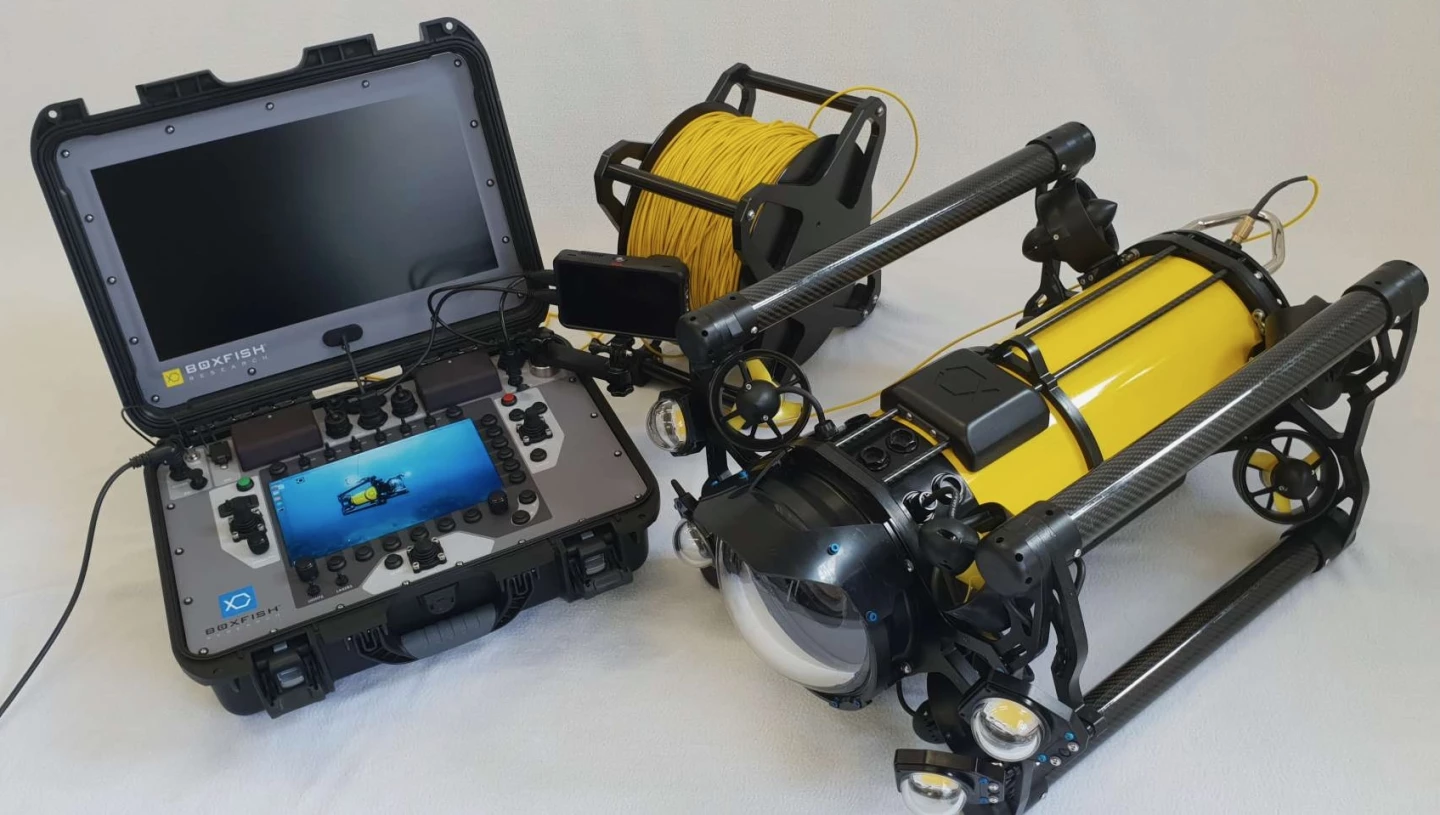
One five-hour charge of its battery is claimed to be good for 15 hours of hovering – real-world runtime will obviously vary depending on what else the ROV is called upon to do.
Footage shot with the Luna can be seen in the video below.
Source: Boxfish Robotics
